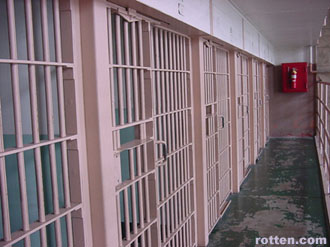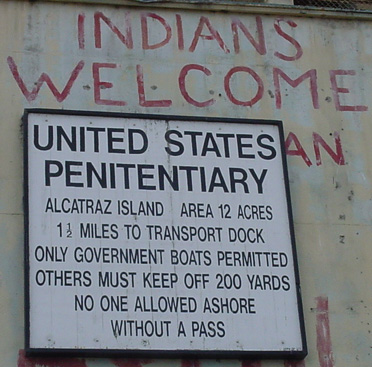|
Alcatraz Alcatraz Island is, to to be sure, a lonely, inaccessible little rock; windblown, covered in seagull droppings, a mere wisp of an island.
Alcatraz Island is, to to be sure, a lonely, inaccessible little rock; windblown, covered in seagull droppings, a mere wisp of an island.
Alcatraz Island as America's most feared Federal Prison was a response and an experiment. America's attitude of the day, after Prohibition and The Great Depression, was that the public was constantly threatened by crime, that law and order must be preserved and that extreme measures for the worst criminals must be taken, bar no expense. Alcatraz became the end of the line for the worst offenders, criminals who attacked guards or those too famous for their own good. Alcatraz was also an experiment in isolation. While the government did consider land in Alaska for the site of their uberprison, the little island in the middle of the cold bay was too perfect and already a military prison, the very definition of isolation with San Francisco's city lights just out of reach. Some of the punishment methods endured by prisoners at Alcatraz resemble torture: beatings with iron clubs, isolation, sensory deprivation, time spent in windy dungeons, bread and water diets. Life on "The Rock" meant hard labor and terrible conditions. From Alcatraz Prison Rules and Regulations: "You are entitled to food, clothing, shelter, and medical attention. Anything else you get is a privilege." During the prison's lifetime, only thirty-six attempted to escape. Most were recaptured without incident, seven were shot and only one is unaccounted for. In June, 1962, two men escaped and were never heard from again. The currents of the San Francisco Bay would have swept their bodies out to sea, success was unlikely at best.
A staff of 90 guards to was required to guard the 260 or so prisoners on the island. Many of the guards, about two-thirds of the staff, lived with their families on the island. Apartment buildings and wood frame houses were built. The Warden lived in a large house on the island. The elaborate structure that is the prison consists of 330-odd cells. In 1848, the end of the Mexican War allowed the United States to take possession of "Northern Mexico" which including Nevada, Arizona, New Mexico, Utah and California. Since this time, Alcatraz has served as a military fortress, one of the nation's most feared prisons and finally, after the buildings began to crumble, a national park. The United States military became using Alcatraz as a fortress in 1850. President Fillmore signed an Executive Order to reserve lands around the San Francisco Bay, including Alcatraz Island, to be used for the purpose of guarding the area. Alcatraz sported several cannons with enormous balls and a lighthouse. In 1907, Alcatraz became simply "Branch, U.S. Military Prison" and ceased to be a fortress. Alcatraz remained a prison until 1962 when America collectively warmed up to rehabilitation of prisoners and the Island's buildings became too dilapidated to maintain. Headlines all over the country read: ALCATRAZ CLOSES
When two oil tankers crashed in early 1971, it was at first thought that the lack of a lighthouse was the cause and perhaps this is what spurred federal marshals, FBI agents, and special forces into removing women, children, and six remaining Indian men. The occupation ended in June, 1971, but not before American Indians received national attention. |
 Some of the more famous guests of the state included
Some of the more famous guests of the state included  On November 20, 1969, a group of Indians and supporters undertook a symbolic occupation of the island, claiming the island in the name of "Indians of All Tribes". The occupation, the third attempt in a series of such events, lasted 19 months. The government did their best to drive the Indians and college students away, shutting off power, surrounding the island with an (ineffective) barrier and removing their source of fresh water. Support for their position eventually waned due to rumors of beatings, damage to historical structures and the sale of copper pipes to raise money.
On November 20, 1969, a group of Indians and supporters undertook a symbolic occupation of the island, claiming the island in the name of "Indians of All Tribes". The occupation, the third attempt in a series of such events, lasted 19 months. The government did their best to drive the Indians and college students away, shutting off power, surrounding the island with an (ineffective) barrier and removing their source of fresh water. Support for their position eventually waned due to rumors of beatings, damage to historical structures and the sale of copper pipes to raise money.